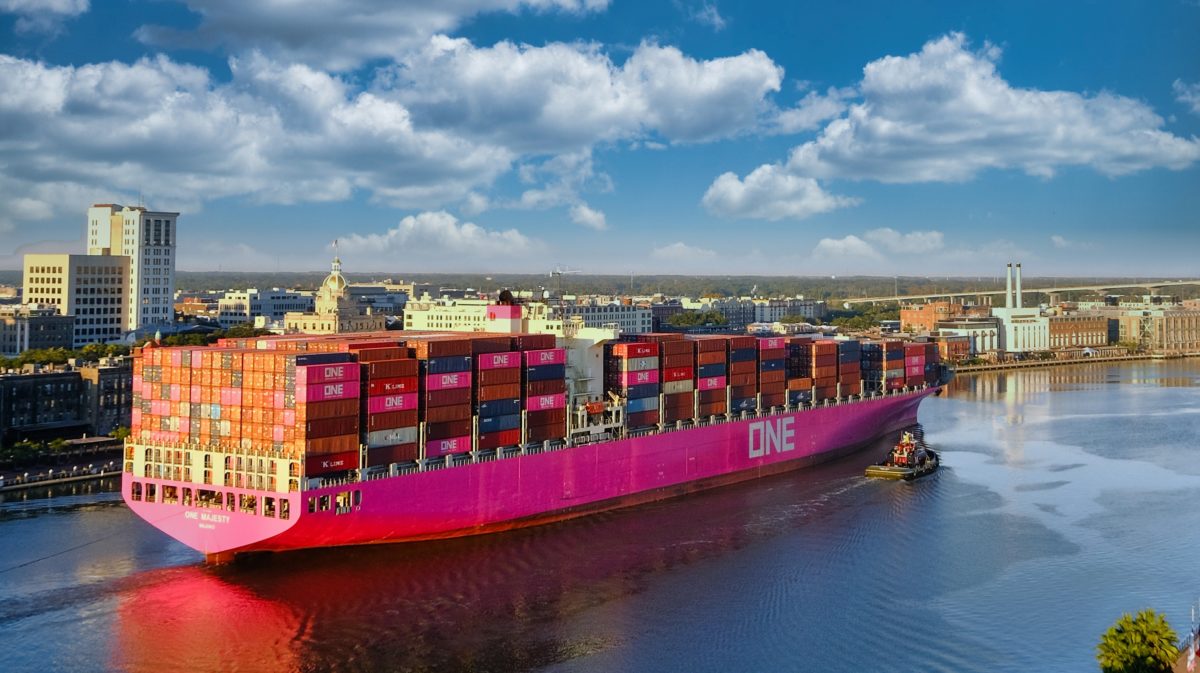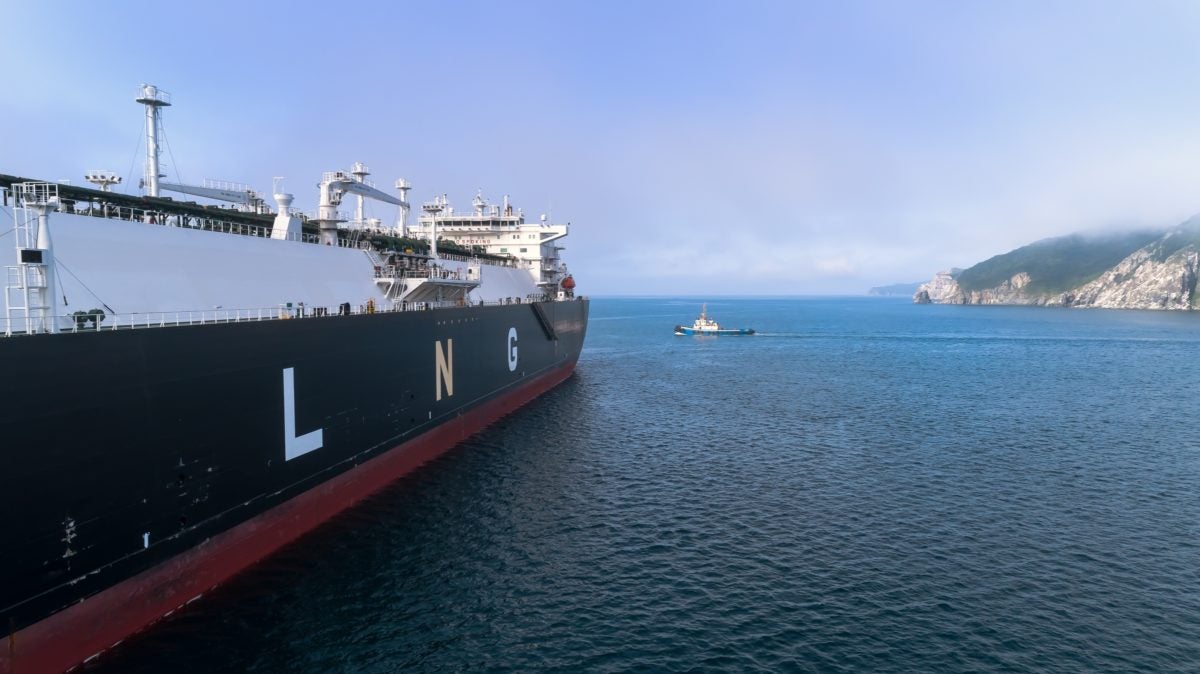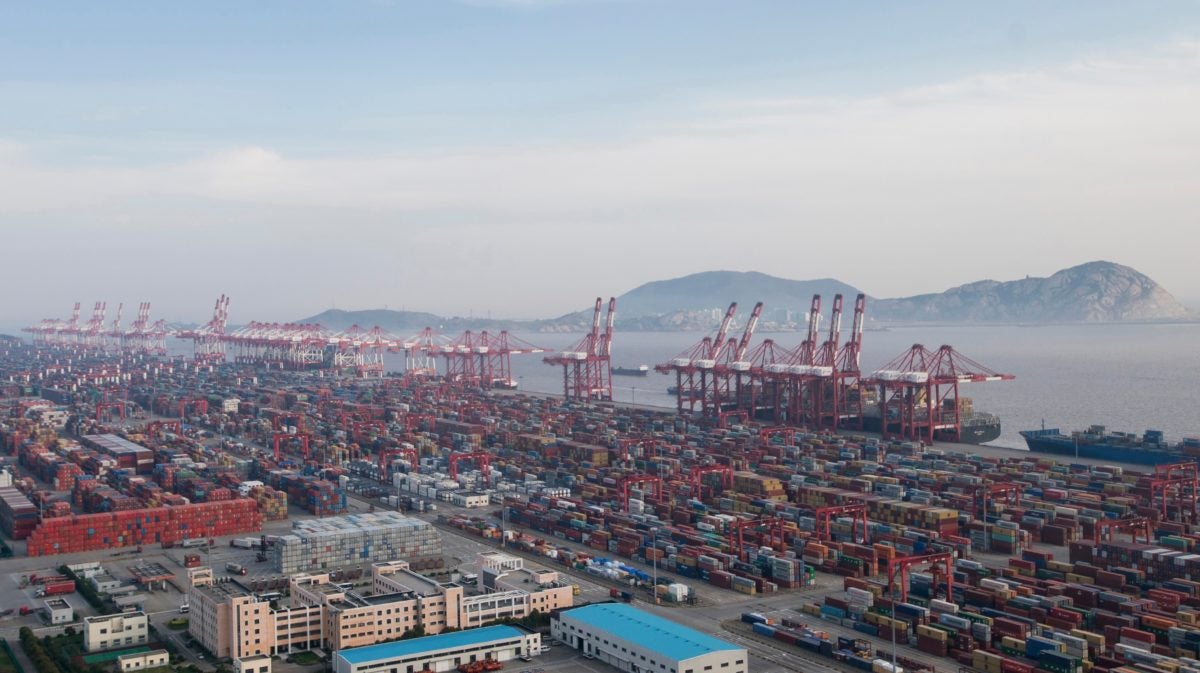Three key drivers shaped ocean shipping markets in 2022: the end of the container boom, Russia’s invasion of Ukraine and China’s worsening economic and geopolitical situation.
Here’s a look back at this year’s coverage of how each driver impacted shipping rates and volumes.
Container shipping boom finally winds down
The traffic jam of container ships stuck waiting off U.S. ports reached an epic peak as this year began. There were 109 container vessels waiting off Los Angeles/Long Beach on Jan. 9, with around 150 waiting off all U.S. ports combined (story here).
Shipping spot rates eased from stratospheric 2021 highs but remained exceptionally strong in the first quarter, buoyed by congestion and inventory building. The timing couldn’t have been worse for U.S. importers negotiating 2023 annual contracts that started May 1. They agreed to unprecedented contract price hikes (story here).

The Southern California queue whittled down through the spring. But like a game of whack-a-mole, congestion popped up instead on the East and Gulf coasts. Shippers, fearing disruption when the West Coast port labor contract expired on July 1, switched volumes to other coasts (story here).
By the end of July, the countrywide count of waiting ships was all the way back up to around 150 — marking a second peak — driven by East and Gulf Coast congestion (story here).
The number of waiting ships has been falling ever since. The Los Angeles/Long Beach queue was effectively gone by late August and officially declared dead in November (story here). The total number of ships waiting off all U.S. ports was down to around 50 by this month.
U.S. import volumes remained strong through August, then began falling sharply starting in September, led by declines at West Coast ports. By November, declines were countrywide (story here).
The moderate spot-rate decline in the first half of this year accelerated in August and September — spot rates fell off a cliff. More recently, the pace of spot-rate declines has slowed (story here).

Spot rates have sunk below annual contract rates signed early in the year — to the dismay of shippers that signed those contracts. In many cases, annual rates have been adjusted lower mid-contract and more volumes have been shifted to spot (story here).
Ocean carriers face major challenges ahead, given sinking spot rates, lower contract rates kicking in halfway through next year (if not sooner) and a massive flood of new ships that’s about to hit the water (story here).
However, carriers are far from in distress, still pocketing billions per quarter. Profits didn’t peak until the third quarter of 2022 (story here). Carriers are entering this down cycle with enormous cash cushions. Some analysts believe there is a path through the minefield ahead (story here).
Russian invasion resuscitates tanker business
The pandemic was not a “black swan” — it was a known risk — but it had black-swan-like effects on shipping. Just as the pandemic eased in early 2022, world trade was shaken by yet another historic event: Russia invaded Ukraine, setting off the largest armed conflict since World War II, one that could become much larger at a moment’s notice.
Container shipping fallout has been limited. Major shipping lines immediately “self-sanctioned” and pulled services from Russia. Given Russia’s small market size, this had little effect on container lines (story here).
Tanker markets, in contrast, have seen huge changes.

First, Russia throttled down pipeline deliveries of natural gas to the EU, then someone blew up the pipelines. The EU needed to fill its stockpiles by this winter, prompting an armada of liquefied natural gas tankers to deliver cargoes from the U.S. Gulf (story here).
The profits on LNG cargoes shot so high that charterers snapped up most of the remaining tonnage on long-term contracts so they wouldn’t miss out. Due to the resultant lack of spot vessels, LNG shipping spot rates rose to around $500,000 per day (story here) — the highest day rate paid for any kind of cargo transport ship in history. Rates have since fallen back to $200,000 per day.
In June, the EU voted to ban seaborne crude imports from Russia starting Dec. 5 and products imports starting Feb. 5 (story here). Trade routes began to shift before those dates. More Russian exports flowed to China and India. The EU replaced Russian imports with cargoes from the U.S., Brazil, West Africa and the Middle East.
The longer voyage distances of the replacement routes pushed up spot rates for crude tankers (story here) as well as product tankers (story here).
As 2022 draws to a close, the big question is how EU sanctions on tanker insurance will affect Russian exports to non-EU countries. The G7 and EU price-cap plan is designed to keep sanctions from reducing volumes too much while still curbing Russian oil income. It might work in practice even if it doesn’t on paper (story here).
No matter what happens with the price cap, it has been a banner year for crude and product tanker owners. Stock investors and traders reaped the rewards of war-juiced tanker rates. If 2021 was the year of container stocks, 2022 is the year of the tanker stocks (see story).
The China factor
No country is more central to shipping than China. It is the world’s largest importer of dry bulk cargo, the largest charterer of crude tankers, the second largest importer of LNG and the largest source of containerized export cargo.
China is the world’s largest shipbuilding nation. Its factories construct over 90% of the world’s containers. It boasts seven of the world’s top 10 container ports (story here).
When China stumbles, so does shipping. China stumbled in 2022. The International Monetary Fund expects China GDP growth of only 3.2% this year, down sharply from 8.1% in 2021. Investment bank Evercore ISI expects China growth this year of only 2%.
China’s demand for dry bulk imports was battered by a property development crisis and COVID lockdowns (story here). Pandemic measures decreased the mobility of citizens, curbing fuel demand and thus demand for tanker imports. Lockdowns simultaneously snarled container cargo supply chains (story here).

U.S. imports from China slowed faster than overall imports. China Beige Book CEO Leland Miller warned that “the China growth story is over now.” (Story and video interview here.)
China’s economic malaise is just part of the story for shipping. The other involves geopolitical tensions. First came China’s allegiance to Russia in the wake of the Ukraine invasion. Then came live-fire military exercises off Taiwan (story here).
Shipping market participants are now openly talking about and planning for the possibility of a future war between the U.S. and China. As with the pandemic and the Ukraine-Russia war, a U.S.-China military conflict does not meet the definition of a black swan but promises the gravity of consequences associated with one.
“What happened this year has amplified and emphasized that you’d be foolish to depend on a steady supply at a low cost from China, given what might happen geopolitically,” said Paul Bingham, director of transportation consulting at S&P Global (story here).
For energy shipping, a future U.S.-China war is “almost not even worth worrying about because the consequences are so big,” said Flex LNG (NYSE: FLNG) CEO Oystein Kalleklev (story here).
“If that happens we’re all screwed. Russia and Ukraine would look like a small bump in the road. You would have an energy shock like you’d never seen before. The whole world economy would stop.”
Click for more articles by Greg Miller
Related articles:
- Five years on Wall Street: Shipping’s exits, arrivals, whales and minnows
- Plunge in US imports accelerates; volumes near pre-COVID levels
- US imports from China falling faster than from other countries
- Container shipping rates still sinking, no sign yet of market floor
- How much money do shipping CEOs make? Here’s their 2021 pay info








Larry Bajmakovich
I notice there is no longer an option to share article/content. I’m curious why this is no longer available?